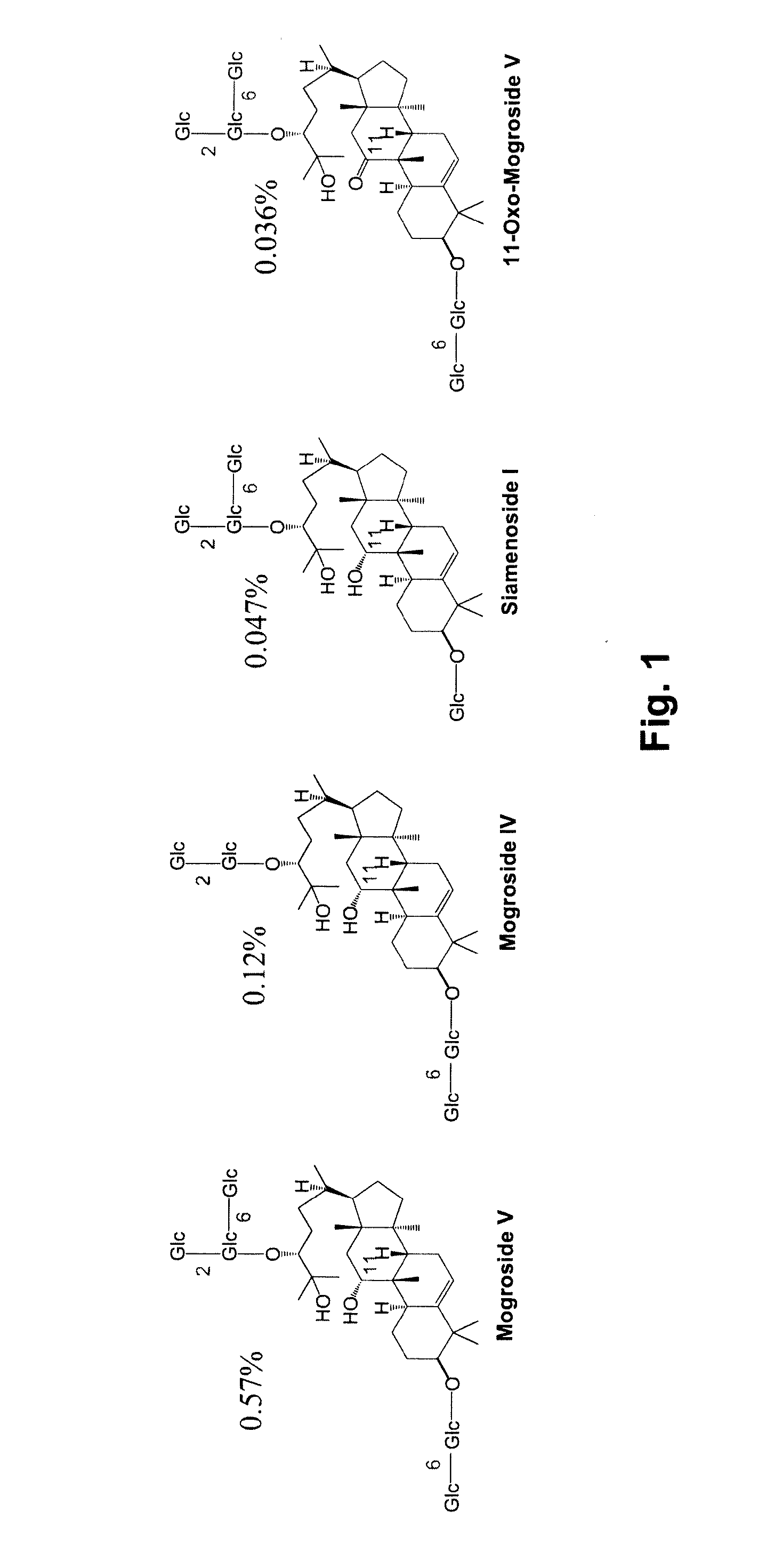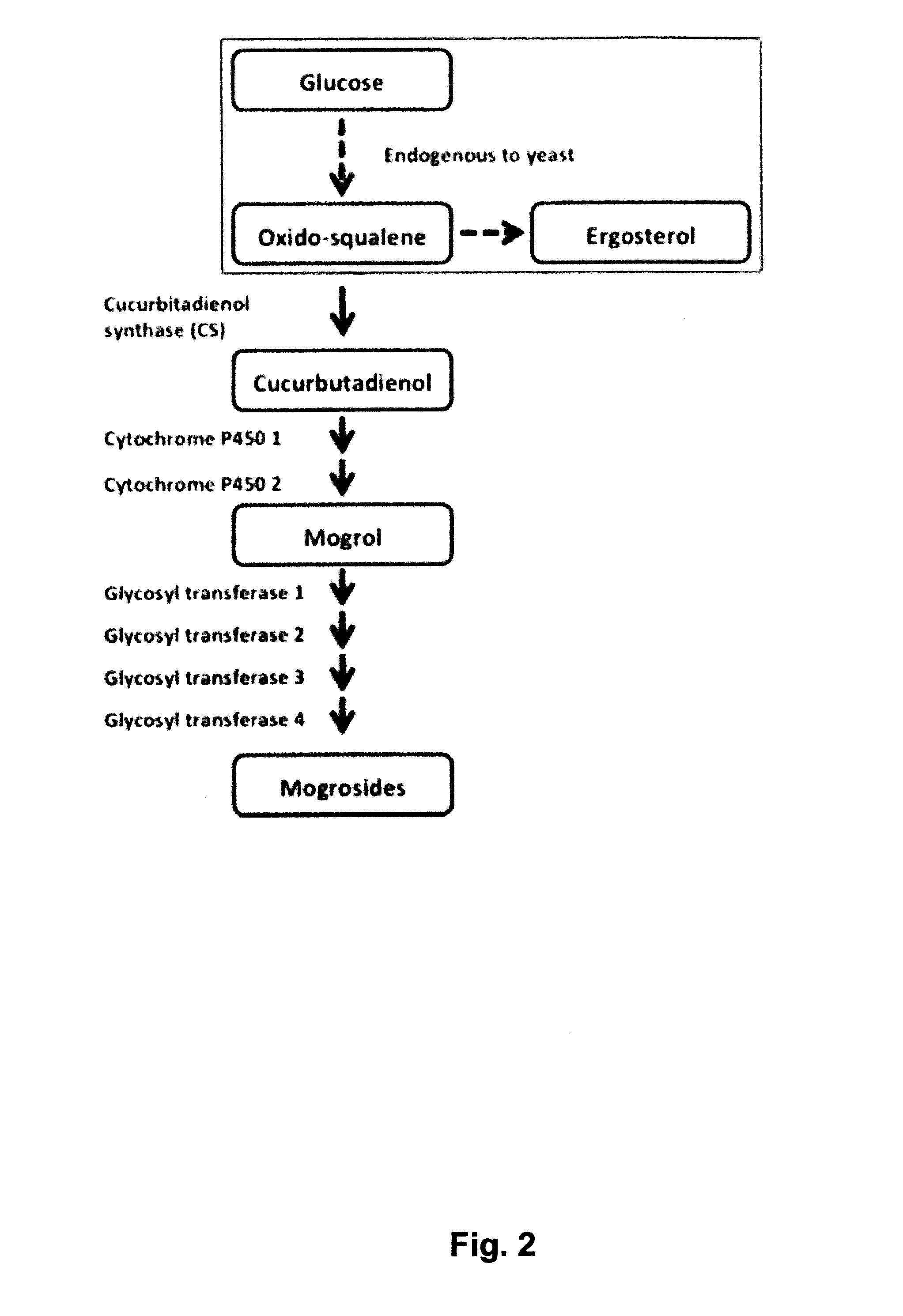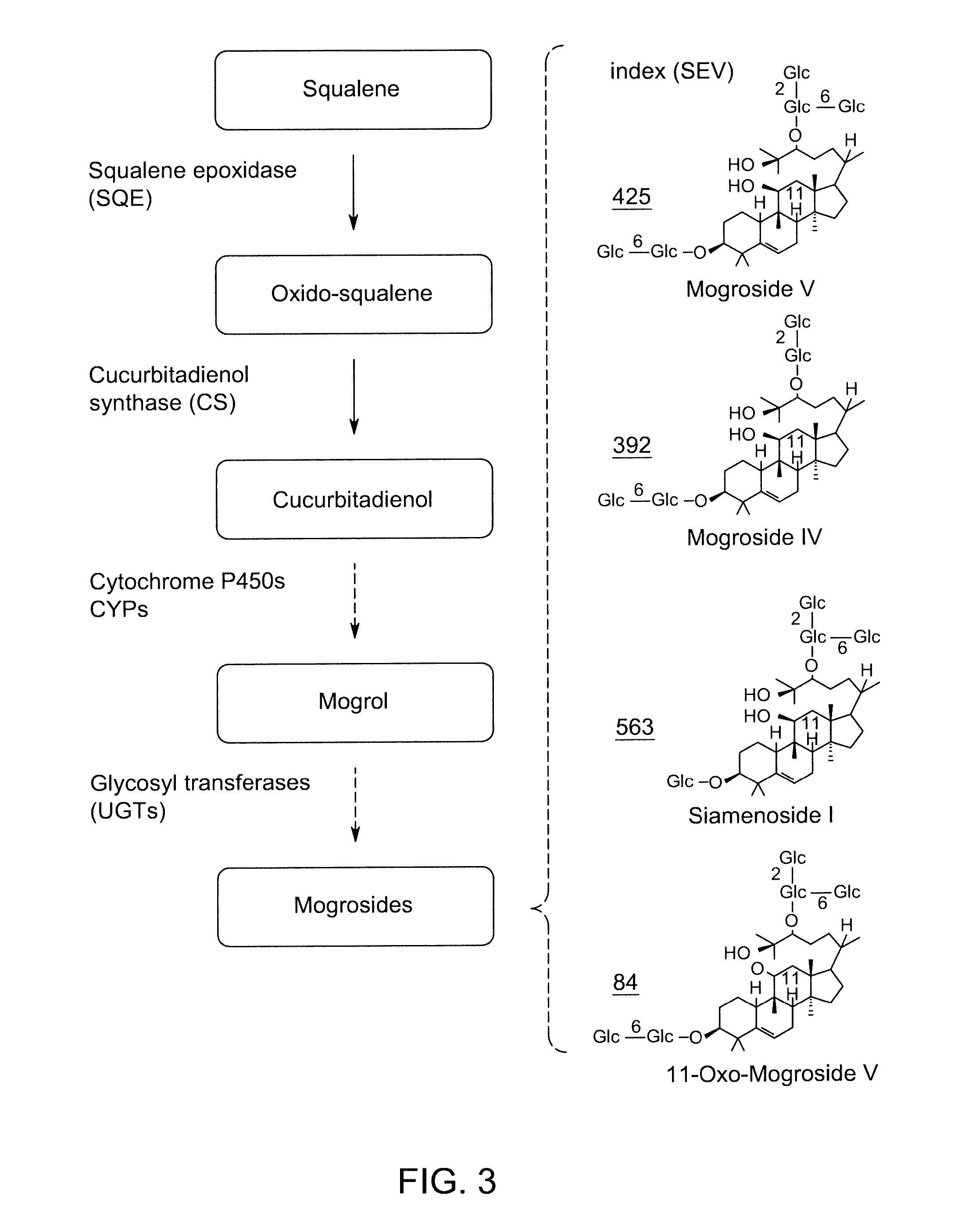Methods and materials for Biosynthesis of Mogroside Compounds
a technology of mogrosides and biosynthesis, applied in the direction of enzymology, microorganisms, transferases, etc., can solve the problems that the enzymosome responsible for producing mogrosides has not been identified
- Summary
- Abstract
- Description
- Claims
- Application Information
AI Technical Summary
Benefits of technology
Problems solved by technology
Method used
Image
Examples
example 1
Purification of Mogroside V
[0257]Mogroside V was purified from commercially available monk fruit extracts (PureLo®, Swanson) as follows. Three bottles of PureLo® (240 grams) were dissolved in water (900 mL), then loaded on a column of HP-20 resin (400 gram resin). The column was washed with water (2.5 liters); then further washed with 20% methanol-water. The product was eluted with methanol. After evaporation of solvents and drying under high vacuum, mogroside V (2.5 grams, ˜80% purity, 11-oxomogroside V was the major impurity) was obtained.
example 2
Enzymatic Synthesis of Mogrol from Mogroside V
[0258]Mogroside V (300 mg) was dissolved in 0.1M sodium acetate buffer (pH 4.5, 100 mL), and crude pectinase from Aspergillus niger (25 mL, Sigma P2736) was added. The mixture was stirred at 50° C. for 48 hours. The reaction mixture was extracted with ethyl acetate (2×100 ml). The organic extract was dried under vacuum then purified with preparative HPLC. Pure mogrol (40 mg) was obtained and its structure confirmed by NMR and mass spectroscopy. See FIG. 6.
example 3
Enzymatic Synthesis of Mogrol 3-O-Glucoside (Mogroside I E1) and Mogrol 24-O-Glucoside (Mogroside I A1) from Mogroside V
[0259]Mogroside V (300 mg) was dissolved in 0.1M sodium acetate buffer (pH 4.5, 100 ml), and crude pectinase from Aspergillus niger (25 ml, Sigma P2736) was added. The mixture was stirred at 50° C. for 6.5 hours. The reaction mixture was extracted with ethyl acetate (2×100 ml). The organic extract was dried under vacuum then purified with preparative HPLC. Pure mogroside I E1 (11.0 mg) and mogroside I A1 (8.0 mg) were obtained. Their structures were confirmed by NMR and mass spectroscopy. See FIG. 6.
PUM
| Property | Measurement | Unit |
|---|---|---|
| w/w | aaaaa | aaaaa |
| chemical structure | aaaaa | aaaaa |
| weight | aaaaa | aaaaa |
Abstract
Description
Claims
Application Information
 Login to View More
Login to View More - R&D
- Intellectual Property
- Life Sciences
- Materials
- Tech Scout
- Unparalleled Data Quality
- Higher Quality Content
- 60% Fewer Hallucinations
Browse by: Latest US Patents, China's latest patents, Technical Efficacy Thesaurus, Application Domain, Technology Topic, Popular Technical Reports.
© 2025 PatSnap. All rights reserved.Legal|Privacy policy|Modern Slavery Act Transparency Statement|Sitemap|About US| Contact US: help@patsnap.com



